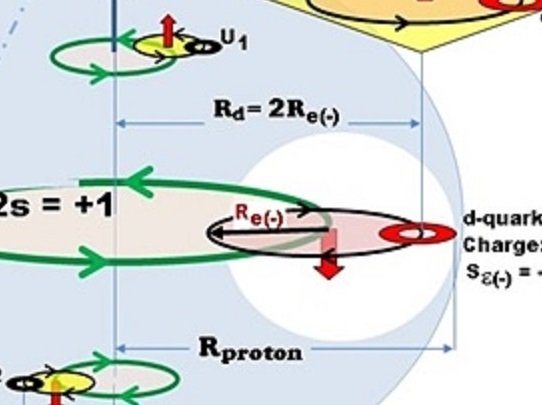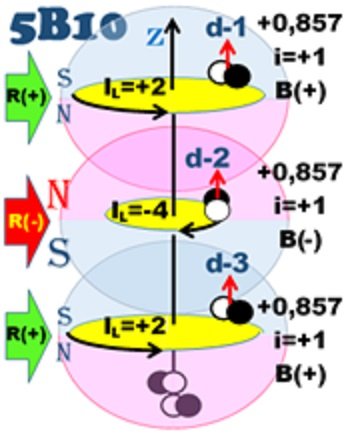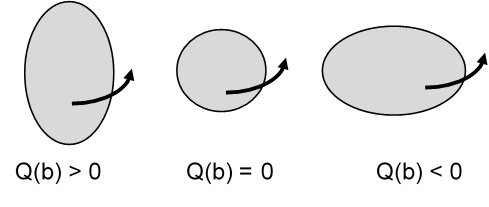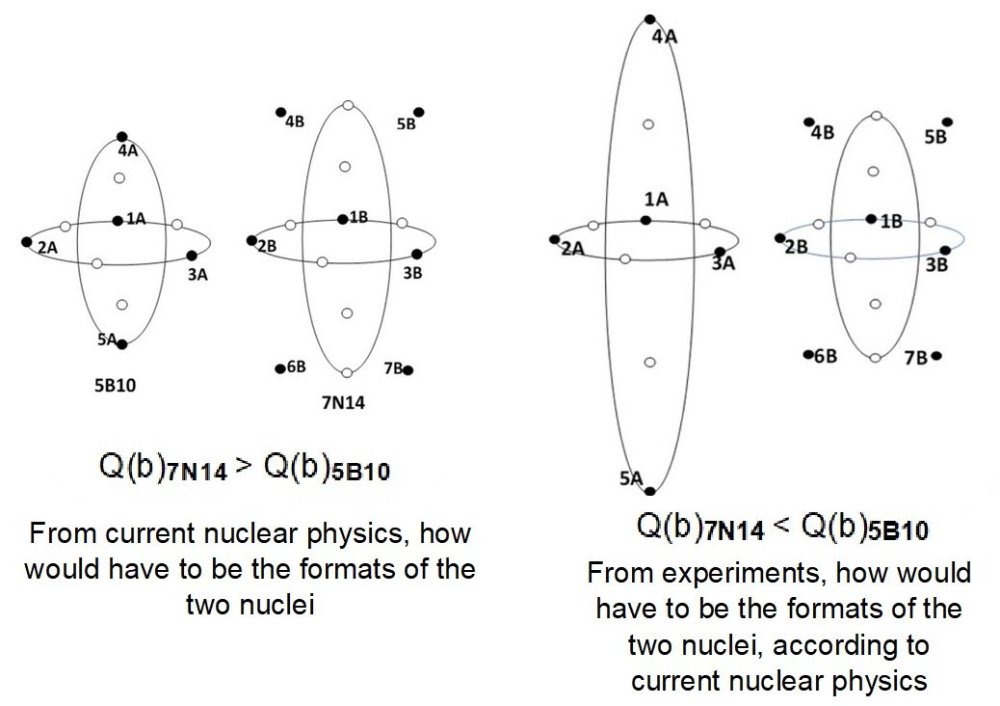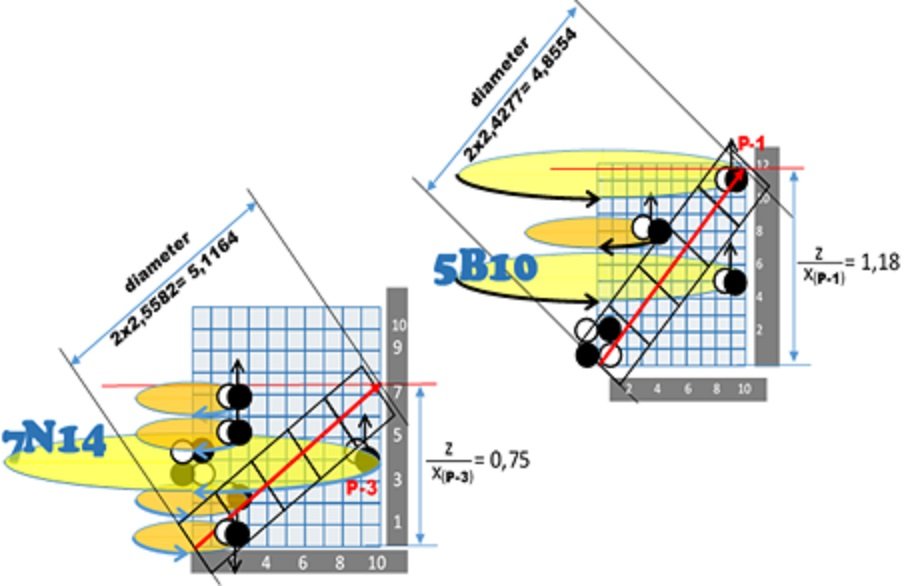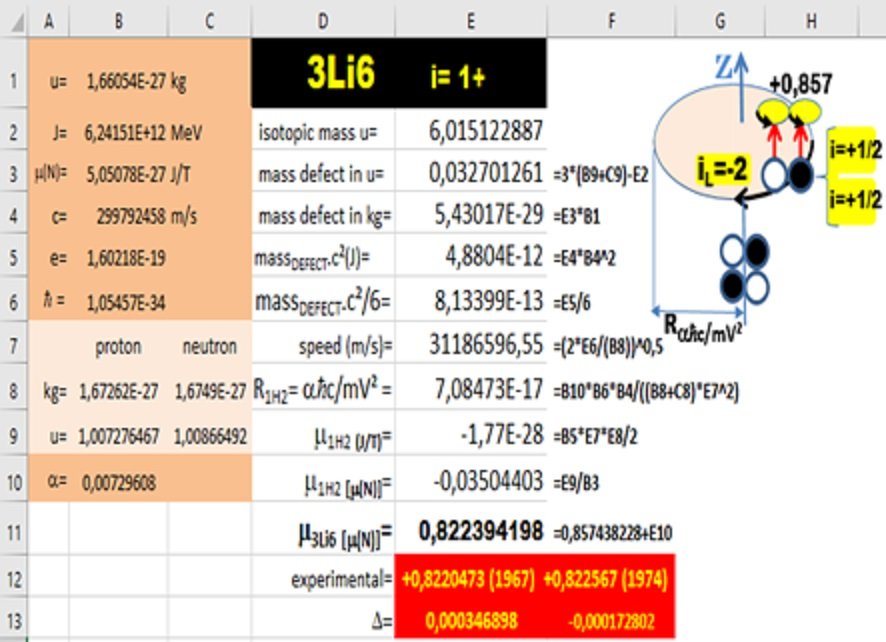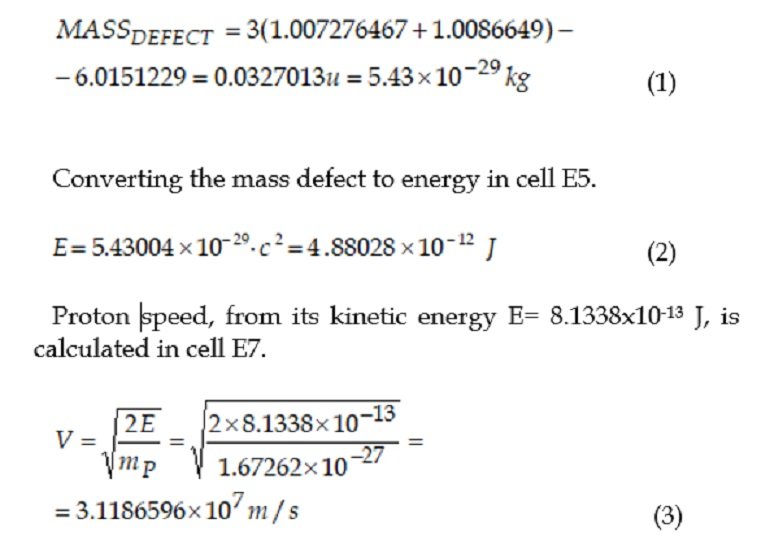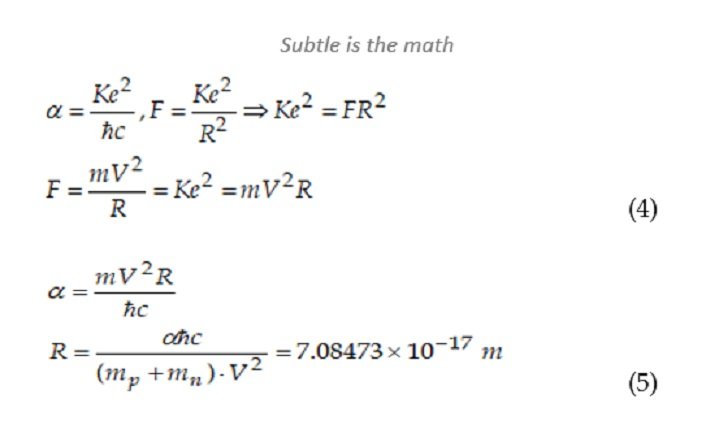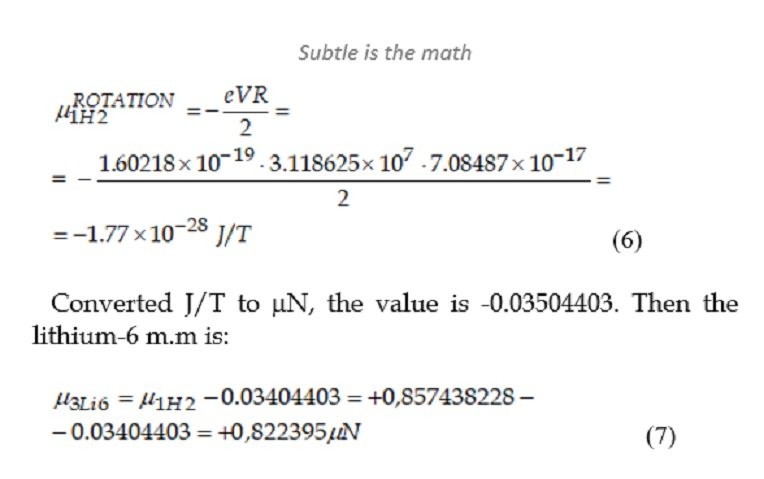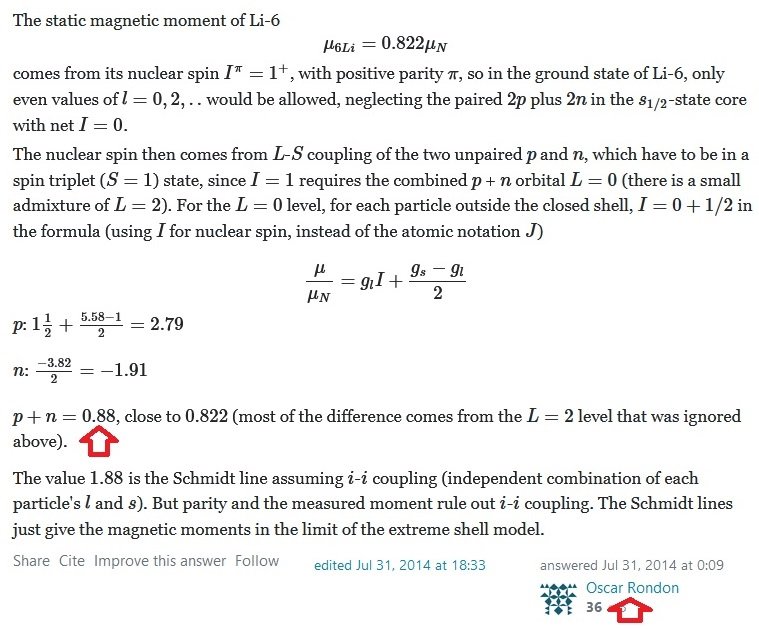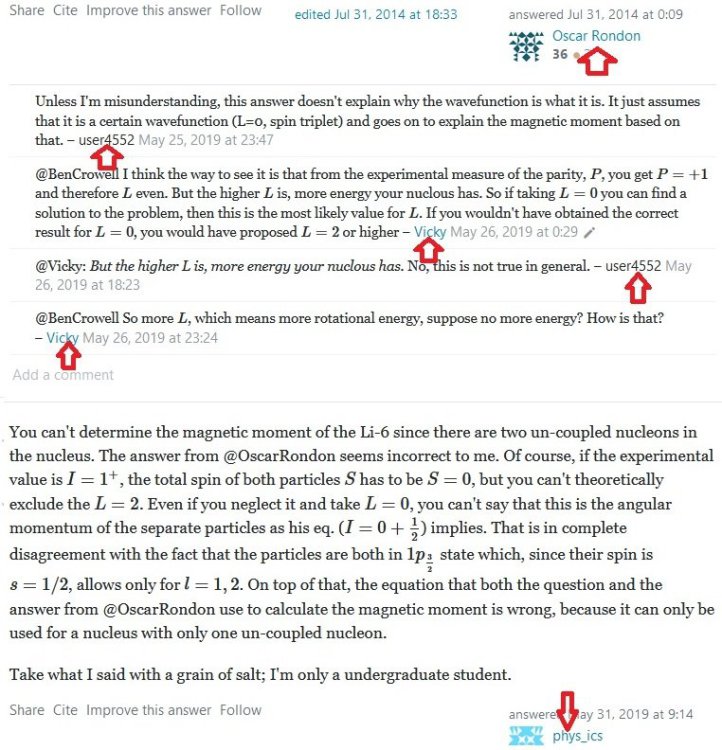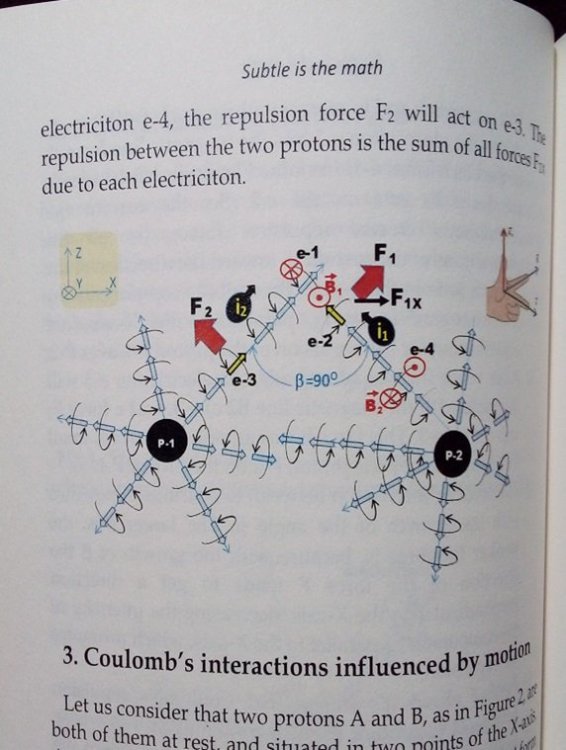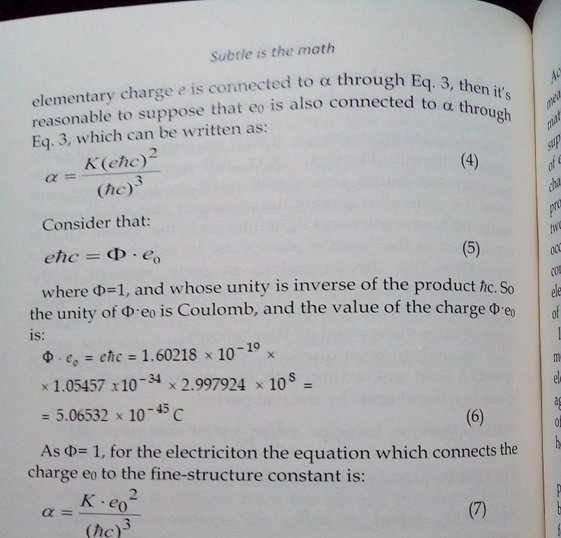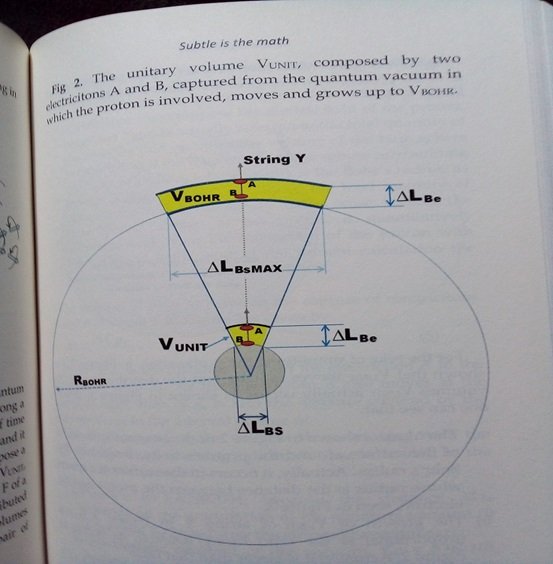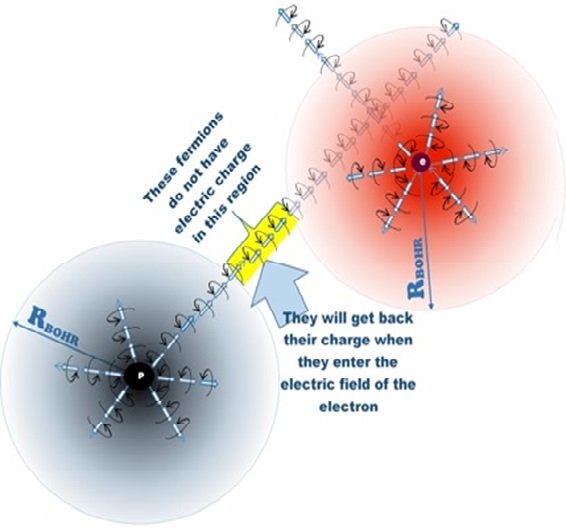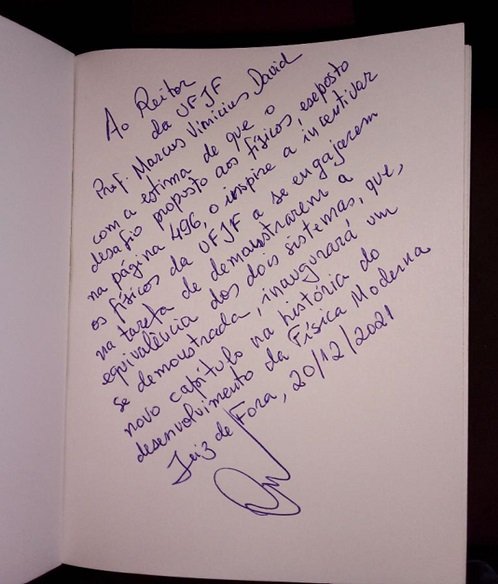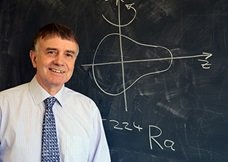
wlad
Members-
Posts
19 -
Joined
-
Last visited
Everything posted by wlad
-
Professor José Abdala Helayel is a researcher of the Centro Brasileiro de Pesquisas Físicas - CBPF (Brazilian Center of Physics Research). I sent him an email yesterday, saying the following (translation to English by Google): ==============00============== Dear Prof Helayel Nobel Laureate in Physics Steven Weinberg expressed his opinion (at a time when physicists were still hopeful that Supersymmetry would be detected in LHC experiments) about the state of quantum theory at that time, in these words: “Perhaps a replacement for today’s quantum theory will come together any time now. Or perhaps not. Maybe it’s just the way we express the theory is bad and the theory itself is right. Or possibly a surprise is in store. There’s always a third possibility, that’s there’s something else entirely, that we’re going to have a revolution in science which is as much of a break with the past as quantum mechanics is a break from classical physics. That’s a possibility. It may be that a paper from a graduate student tomorrow morning will lay it out. By definition I don’t know what that would be.” In the opinion of the Nobel Prize, theoretical physics at that time was already threatened by the need to be reassessed. Many years after these words by Weinberg, in 2014 the Nobel Prize in Physics David Gross expressed his opinion on what represented the failure to confirm Supersymmetry at the LHC, in 2012: “In the absence of any positive experimental evidence for supersymmetry, it’s a good time to scare the hell out of the young people in the audience and tell them: ‘Don’t follow your elders—Go out and look for something new and crazy and powerful and different. Different, especially.’ That’s definitely a good lesson. But I’m too old for that.” Humm... “Something new and crazy and powerful and different. Different, especially”... words that reflected how much the crisis has worsened, after what Steven Weinberg said about the state of quantum physics. Today many must be following the advice of David Gross, looking for a solution through a revolutionary theory that is something new, crazy, powerful, and different. But certainly everyone who is undertaking this quest is making this attempt through the current foundations on which Modern Physics was developed. And among these foundations is the fundamental principle on which Modern Physics was developed: the principle of symmetry. However what if this path is not successful, and the new crazy theories that are proposed require that other crazier theories still be developed? What will be the future of Modern Physics, through this scenario? In 2013, the European Physical Journal C published the article The quantum vacuum as the origin of the speed of light, in which the authors proposed the hypothesis of the existence of pairs of fermions in the quantum vacuum, and proposed an experiment that could prove this hypothesis. In 2021 the peer-reviewed journal Physics Essays published my article Calculation of proton charges from the electric charges of the fermions of the quantum vacuum, in which the electric charge of the fermions of the quantum vacuum is calculated, and from this charge the charge was calculated of the proton, obtaining the value e = 1.6026×10−19 C, which is very close to the experimental e = 1.60218×10−19 C. What I would like to know is whether there is currently technology through which an experiment can be carried out capable of detecting the value of the electric charge of these quantum vacuum fermions, whose value calculated in my article is e0 = 5.06532 × 10−45 C. If this technology is available, and if the experience is confirmed, imagine the repercussions this will have for the future of Modern Physics. For that suggestion of David Gross (that the crisis in physics must be solved through a crazy theory) could be replaced by the suggestion of Steven Weinberg, that "there is always a third possibility". And this third possibility is perhaps contained exactly in what I have been proposing in my work, if the experiments confirm the charge e0 = 5.06532 × 10−45 C of the quantum vacuum fermions (those that have a charge, as there are others that have other properties). It is the future of Modern Physics that is at stake. So, dear Prof. Helayel, I would like to know his opinion. Or, if you are not the most qualified person to answer my question (about whether there is a technology today to measure this charge of quantum vacuum fermions), surely you will know some experimental physicist who has an answer to this question. I am sending as an attachment, in PDF, the article Calculation of proton charges from the electric charges of the fermions of the quantum vacuum. Best Regards Wladimir Guglinski ==============00============== Dr. Helayel sent me the following reply today morning (translation by Google): ==============00============== Hi Wladimir! Thank you for your text with a clear exposition of ideas. About the virtual fermions of the quantum vacuum, perhaps what the most recent and close to what you want is the super-LASER of Shanghai (SULF = Shanghai Ultra LASER Facilities), which operates in the Peta-Watt region and brings very strong electric and magnetic fields. intense. What is expected is that you can "break the vacuum" and generate currents of pairs coming out of the vacuum. Once these measurements currents, it would reach what you are trying to measure. Go to the SO SULF website. Attached here are slides from a seminar that I gave at UFU. See only slide 4, where I leave two references that speak of the SULF. Are not yet what I told you about breaking the vacuum, but they already give details of this super-LASER. See also super-LASER ELI: Extreme Light Infrastructure. Perhaps, with these super-LASERs, what you propose will be achieved measure. Hug, Helayel. ==============00============== Then today I sent an email to SULF, as seen below: ==============00============== Wladimir Guglinski <wladski@yahoo.com> To:iangxy@siom.ac.cn,lengyuxin@siom.ac.cn,zzxu@mail.shcnc.ac.cn Sun, Mar 5 at 5:44 PM Dear professors Dr. Xiaoyan Liang Dr. Yuxin Leng Dr. Ruxin Li Dr. Zhizhan Xu In March 2013 the European Physical Journal C published the article The quantum vacuum as the origin of the speed of light , in which is proposed an experiment to confirm what is theoretically proposed in the article. The Abstract is this: Abstract We show that the vacuum permeability μ 0 and permittivity ε 0 may originate from the magnetization and the polarization of continuously appearing and disappearing fermion pairs. We then show that if we simply model the propagation of the photon in vacuum as a series of transient captures within these ephemeral pairs, we can derive a finite photon velocity. Requiring that this velocity is equal to the speed of light constrains our model of vacuum. Within this approach, the propagation of a photon is a statistical process at scales much larger than the Planck scale. Therefore we expect its time of flight to fluctuate. We propose an experimental test of this prediction. In 2021, the peer-reviewed journal Physics Essays published my paper Calculation of proton charges from the electric charges of the fermions of the quantum vacuum, in which is calculated the value of the electric charge of the fermions of the quantum vacuum (those with an electric charge). The value achieved for the charge e0 is 5.06532 × 10−45 C. From this value of e0, together with the fundamental constants KO , c, ħ , and α = 1/137, the electric charge of the proton is calculated, achieving the value e = 1.6026×10−19 C, which is very close to the experimental e = 1.60218×10−19 C. The article, in PDF, is attached to this email. So, I would like to know yours opinion: would it be feasible to carry out an experiment in the Shanghai Superintense Ultrafast Laser Facility (SULF), to measure the electrical charge e0 = 5.06532 × 10−45 C calculated in my article? Regards Wladimir Guglinski ==============00==============
-
OceanBreeze, Figure 7 of my topic The most acurate calculation of the nuclear physics, posted here some days ago, has 235kB
-
OceanBreeze the first figure of the paper, which I tried to attach, has 93,1kB When I try to attach it, this message appears: 1 file would exceed the total allowed size of 36.474kB, and was skipped I tried to attach it here now, where we are now talking. The same message appeared: 1 file would exceed the total allowed size of 36.474kB, and was skipped I tried now to attach here a file with 68,2kB, and the following message appeared: Sorry, an unknown server error occurred when uploading this file. (Error code: You can only upload a total of 36.47 kB.) I tried a file with 58,3KB, and the same message appeared. With 46,1kB the file was attached:
-
OceanBreeze I already posted two topics here in this forum. In each of these two topics there are several figures (about ten figures in each topic). In this third topic I tried to post, in the first picture I tried to add, it wasn't accepted, and I couldn't proceed. Now, the figure that was rejected in this third topic is the same size as each figure that I had previously posted in the other two topics. So, why in those two topics were accepted several figures (the same size as the figure rejected in the third topic), and in the third topic that I tried to create, not even the first figure was accepted? Could it be that the reason is because each member of the forum is only entitled to a limited amount of 36,474kB, and I have already exhausted that amount in the two topics that have already been posted?
-
OceanBreeze what I said, about the fact that physicists are afraid of mathematics, (because although they love it when it proves their theories, however they hate it and spit on it when it proves that one of the current theories is wrong), it doesn't just refer to only to the physicists on that other forum. It is a widespread phenomenon. So it wasn't a criticism specifically about those physicists on that forum. It was a criticism that applies to all physicists who betray the scientific method, who spit on mathematics when it suits them. They are spread across universities, physics forums, research labs. They want, at all costs, to prevent the Scientific Truth from prevailing.
-
OceanBreeze. I tried to post a new topic entitled Calculation of the magnetic moment of the proton through the mass defect. But when I tried to attach the first figure, the following message appeared: 1 file would exceed the total allowed size of 36.474kB, and was skipped Why did this happens?
-
No. The moderator kicked me out because (edited out by moderator) Before kicking me out, swansont warned me not to post threads citing my books (I had posted a thread citing my book Subtle is the Math, exposing how I had calculated the proton charge from the charge of the quantum vacuum fermions). He warned me that he would kick me out if I posted another thread quoting one of my books. I posted the topic where the magnetic moment of the proton is calculated from the mass defect. I didn't quote any of my books. About 18 hours later swansont banned me. Probably many physicists (edited out by moderator)
-
"...which may be interpreted as the presence of particles, such as electrons and photons" ... is a speculation. In the paper published in European Physical Journal C the authors are proposing an experiment: "We show that the vacuum permeability μ 0 and permittivity ε 0 may originate from the magnetization and the polarization of continuously appearing and disappearing fermion pairs. [...] We propose an experimental test of this prediction." Therefore, they are proposing an experiment for the speculation to be experimentally proven.
-
You didn't understand what I meant. I referred to forums where moderators do not allow threads exposing speculation. I didn't refer to this forum we're on here. You had said: "Not all forums allow for the posting of speculative ideas." It was this type of forum that I referred to when I said: "OceanBreeze, this means that between 1930 and 1956 Wolfgang Pauli could not post any topic in this sort of forums, regarding his theory of the neutrino"
-
OceanBreeze The hypothesis that quantum vacuum is filled by particles is proposed in a paper published in 2013 by the European Physical Journal D. https://link.springer.com/article/10.1140/epjd/e2013-30578-7 The quantum vacuum as the origin of the speed of light Abstract We show that the vacuum permeability μ 0 and permittivity ε 0 may originate from the magnetization and the polarization of continuously appearing and disappearing fermion pairs. We then show that if we simply model the propagation of the photon in vacuum as a series of transient captures within these ephemeral pairs, we can derive a finite photon velocity. Requiring that this velocity is equal to the speed of light constrains our model of vacuum. Within this approach, the propagation of a photon is a statistical process at scales much larger than the Planck scale. Therefore we expect its time of flight to fluctuate. We propose an experimental test of this prediction.
-
"Not all forums allow for the posting of speculative ideas." OceanBreeze, this means that between 1930 and 1956 Wolfgang Pauli could not post any topic in this sort of forums, regarding his theory of the neutrino 😁 The worst situation would be of Higgs. Along 52 years, between 1954 and 2012 Higgs could not post any topic regarding his boson in those forums. 😁😁😁
-
Between 1930 and 1956, probably many idiots, who spit on the mathematics used by Wolfgang Pauli, used to say to him: - "Your neutrino is pure speculation" 😁
-
There are two versions of Science Forums Two days ago I posted two topics on that other version of the Science Forums. In the topic titled "One of the most impressive calculations in theoretical physics" the moderator swansont posted a reply, saying that quantum vacuum fermions were never detected by experiments, and therefore my theory is mere speculation. swansont closed the topic, and I couldn't post a reply to it. Also, as I had already posted two topics, I couldn't post another topic that day. But I wrote a reply to swansont in Word file in my computer, and was waiting the next day to post my reply. However, before the next day, I went on to that Science Forums, to copy the exact words used by swansont in his reply, in order to put them in my reply, but when I tried to enter into Science Forums I found that he had banned me out indefinitely. So, that’s why I'm posting an answer to swansont here. Reply to swansont: Speculations in Theoretical Physics .1- Prediction of the meson Yukawa proposed the existence of the meson in 1934. The meson was detected experimentaly in 1947. Therefore, along 13 years the meson was a mere speculation. And what is worse: Yukawa’s speculation was totaly wrong, because he proposed that a meson jumps between two protons inside the structure of the neutron. However, it is known nowadays that Yukawa’s model of neutron is wrong. There is not any meson inside the neutron. And this error implies in the following: .a) There are several mesons, whose masses vary from 134,9 MeV/c² up to 9,46 GeV/c². Thereby, starting from a wrong speculation, obviously there were a big chance to exist a meson with a mass close to that predicted by Yukawa, since there are several mesons with different masses. .b) But the mass of the meson predicted by Yukawa wasn’t even close to the meson with mass 134,9 MeV/c². The mass of the meson calculated from the wrong Yukawa’s neutron model was 100 MeV/c². A difference of 35%. Yukawa awarded the Nobel Prize from a theory whose prediction had nothing with the existence of the mesons. And his calculation had nothing with the existence of the mesons. With his calculation Yukawa aimed to hit the meson inside the neutron, but his shot crossed the neutron without to hit any meson, and after to leave the neutron the trajectory of the shot passed well past a meson, because the mass closest to 100 MeV was 35% larger than he predicted. .2- Prediction of the neutrino Wolfgang Pauli proposed the existence of the meson in 1930. The neutrino was detected experimentaly in 1956. Therefore, along 26 years the neutrino was a mere speculation. .3- Prediction of the Higgs boson Higs proposed the existence of his boson in 1964. The boson was detected experimentaly in 2012. Therefore, along 52 years the boson was a mere speculation. However, there is a great chance that in upcoming years the comunity of physicists will realize that, despite Higgs boson exists, however it is not the promoter of the mass to particles, because the properties of the boson predicted by Higgs do not fit to the properties of the boson detected in the experiments. .4- Prediction of the dark matter In 1884 Lord Kelvin proposed that “Many of our supposed thousand million stars, perhaps a great majority of them, may be dark bodies". In 1906 Henri Poincaré, in discussing Kelvin's work, he found that the amount of dark matter would need to be less than that of visible matter. In 1922 Jacobus Kapteyn suggested the existence of dark matter using stellar velocities. Along more than 30 years, more than a hundred experiments have failed to detect the dark matter. Each week is announced that a new experimente failed to detect the dark matter. Therefore, along 140 years the dark matter continues being a mere speculation. .
-
The most acurate calculation of the nuclear physics The magnetic moment of atomic nuclei is the only nuclear property through which one can safely assess how much a theoretical model of an atomic nucleus approaches the real structure of nuclei existing in Nature. This stems from the fact that any minimal difference (which exists between the structure of the theoretical model and the real structure existing in Nature) has a huge difference between the value calculated by the theoretical model and the value measured by experiments. In the case of light nuclei, all theoretical models of current nuclear physics have failed to obtain good results in calculating the magnetic moment. This failure stems from the following fact: In light nuclei, the statistical behavior of the distribution of nucleons (protons and neutrons) within the nucleus does not predominate As the number of protons and neutrons grows, the statistical behavior begins to grow, and the tendency of the result of the calculation of the magnetic moment to approach the value measured in experiments begins to grow. In some cases, as a consequence of the lack of predominance of statistical behavior in light nuclei, even the theoretical nuclear spin differs from the value obtained by experiments. The case of greatest divergence occurs with 5B10, whose nuclear spin (according to the nuclear models of current nuclear physics) should be 1, but experiments have detected that the nuclear spin of 5B10 has a value of 3. This difference between what is predicted by current models of nuclear physics (with regard to light nuclei) stems from the fact that the distribution of protons and neutrons in the theoretical model is completely different from the existing distribution in Nature. In my book Quantum Ring Theory, published in 2006, a new nuclear model is proposed in which a 2He4 occupies the center of the nucleus. Figure 1 shows the structure of 5B10. As you can see, in 5B10 the 2He4 is not central, it occupies the bottom part of the nucleus, and this explains why this nucleus is so exotic, and behaves in a completely different way from what is expected from current nuclear models. Figure 1 Another intriguing nuclear phenomenon is that, due to the predominance of statistical distribution, according to current nuclear physics models, the electric quadrupole moment of 7N14 should be greater than that of 5B10. Figure 2 illustrates what the electric quadrupole moment Q(b) is all about. Figure 2 Figure 3 compares what the 5B10 and 7N14 formats should look like, according to the models of current nuclear physics: • On the left what their formats would be, according to current nuclear physics. • On the right, how experiments have detected Figure 3 The values measured in the experiments were these: Q(b)5B10 = +0.0847 Q(b)7N14 = +0.02 That is, instead of being smaller, as predicted by current nuclear theory, Q(b)5B10 is eight times larger than Q(b)7N14. In my book The New Nuclear Physics, soon to be published in England, the magnetic moments of Q(b)5B10 and Q(b)7N14 are successfully calculated. And, from the same structure with which the magnetic moments were calculated, the quadrupole moments Q(b)5B10 and Q(b)7N14 are also calculated, as shown in figure 4. Figure 4 Only from a new nuclear model (in which symmetry does not play a fundamental rule for the distribution of protons and neutrons) can one find the real distribution of nucleons in 5B10, which promotes for boron-10 an electric quadrupole moment four times that of nitrogen-14. Therefore, from the same structures of Q(b)5B10 and Q(b)7N14, seen in figure 4, both the magnetic moments and the quadrupole moments of these two nuclei are calculated in the book The New Nuclear Physics. Such a feat is difficult to obtain from current nuclear physics. Because for many light nuclei, when you use one model to calculate the magnetic moment, and then use the same model to get the electric quadrupole moment, the calculation fails. Among light nuclei, the one with the simplest structure is lithium-6, because it has only the central 2He4, around which a deuteron revolves. And because it's so simple, that's why calculating its magnetic moment is one of the most accurate calculations in nuclear physics, as we'll see below. Calculation of the magnetic moment of lithium-6 In my book Subtle is the Math, 16 articles are presented, including two articles published in the peer-reviewed journal Physics Essays. The following Annex is displayed at the end of article number 3, entitled "Calculation of proton’s radius from the well-known equation α = Ke²/ħc". ================ ANNEX ================ It was said in this present paper that the calculation of the magnetic moment of 3Li6, through the equation a= Ke²/hc, is among the most accurate calculations in physics. In order to show the reader one among the procedures of calculations of magnetic moments used in the book New Foundations of Nuclear Physics, ahead is reproduced the calculation for 3Li6, which wasthe first one made by me, with the equation a= Ke²/hc, when I was on vacationat the end of Dec 2018, on the beach in Cabo Frio, a city near Rio de Janeiro. Calculation of the magnetic moment of 3Li6 From 3Li6 structure shown in Print 1, the deuteron moves with orbit radius R1H2 around Z-axis. The rotation of the proton, responsible for its spin ½, is counterclockwise, inducing positive magnetic moment, m= +2.793 mN. As the proton motion around Z-axis is clockwise, its rotation induces a negative magnetic moment. Print 1. Calculation of the magnetic moment for 3Li6. Total magnetic moment of lithium-6 has two components: 1- First component- Intrinsic magnetic moment of deuteron, m= +0.857 mN. 2- Second component- Magnetic moment caused by proton charge moving around Z-axis, which is negative. The energy of mass defect is shared by six nucleons, three protons and three neutrons. But the rotation of the neutron around Z-axis does not contribute to the magnetic moment of 3Li6, because the neutron has no charge. Only the proton contributes. Therefore, for the calculation of 3Li6 magnetic moment, the energy of mass defect must be divided by six, which is the portion absorbed by the proton. Ahead is calculated the magnetic moment due to the proton orbit around the Z-axis. Lithium-6 has isotopic mass 6.0151229 u, see cell E2 of Print 1. Mass defect, in unity u, seen in cell E3, is converted to kg in cell E4, calculated in Eq. 1. The orbit radius of the deuteron moving around Z-axis is calculated in cell E8, from a=Ke²/hc, the Coulomb’s law, and the centripetal force on the deuteron, as follows: The radius R= 7.08473x10-17 m is not the real radius of the orbit, because inside atomic nuclei the permeability constant mo is not equal to that of the vacuum, as considered in current nuclear physics, but actually it is two orders of magnitude larger than in the vacuum, as calculated in the book New Foundations of Nuclear Physics. As the rotation of the deuteron around Z-axis, seen in Print 1, is negative, and therefore contrary to the direction of the rotation of the proton’s intrinsic spin inside the structure of the deuteron, then the magnetic moment induced by the rotation of the proton charge is negative, and its value is calculated with Bohr’s equation, from the deuteron rotation around Z-axis, where the speed was calculated in Eq. 3, and the orbit radius in Eq. 5. There is no way to know what the difference from the experimental is, because in 1967 was measured the value +0.822567(3), and +0.8220473(6) in 1974. So, one may consider that there is no difference with the experimental, since the theoretical value is situated between the two measurements ================ END OF ANNEX ================ NOTE: Deuteron 1H2 also has a very simple structure, and its magnetic moment is calculated in the book The New Nuclear Physics, through a similar procedure of calculation used for lithium-6 exposed here. The value achieved for 1H2 is m1H2= 0,857348 mN, and the experimental is m1H2= 0,857438 mN. Helium-3 and triton 1H3 also have the value of their magnetic moments achieved very close to the experimental, in that book. Calculations according to current nuclear physics Despite lithium-6 has a very simple structure, the calculation from current nuclear physics is very controversial, and the value achieved is not so accurate. See this discussion shown in figures 5, 6 and 7. Figure 5 shows that “sunrise” asks help for the calculation of the magnetic moment of lithium-6. Figure 5 In Figure 6 Oscar Rondon shows his calculation, but the value achieved is 0,88, not so close to 0,822. Figure 6 In Figure 7 “user 4552” and “Vicky” exchange ideas, whereas “phys-ics” shares the opinion that the calculation made by Oscar Rondon is wrong. Figure 7
-
The paper Mandatory Check for Misunderstanding on Measurements for Magnetic Moments of Excited Even-even Atomic Nuclei was published in 2019 by the peer-review journal Physics Essays, with the title Wrong math procedure used in nuclear physics for the calculation of magnetic moments of excited Z=N even–even nuclei .
-
There is no way to present an overview of the totality of my discoveries, because the number of them is large, and the repercussions for current physics are devastating. But I will cite a calculation, which had never been done in the history of physics. This is an extremely impressive calculation, because it unequivocally proves that Quantum Electrodynamics does not represent what really happens in Nature. First of all, it must be remembered that there is no such thing as an atomistic theory of the electric field in current physics. According to current physics, the electric field is a ghostly thing, that is, it does not exist. And the interaction between bodies charged with electric charges occurs through the exchange of photons by these two bodies, similar to what Yukawa proposed to explain nuclear interactions. Now, I never believed that the electric field could be ghostly, and the reason is quite simple. Let's see: 1- When a proton and an electron are attracting each other, according to current physics, the electric field of both is being constituted by the photons responsible for their attraction. 2- But what about when a proton is alone, isolated? What is his field made of? After all, if he is not exchanging photons with another particle with an electric charge, what is the proton field made of???? In the first article of the book Subtle is the Math, entitled "Relation between QED, Coulomb's Law and fine-structure constant", the theory of the structure of the electric field was proposed, composed of fermions of the quantum vacuum, which move with the speed of light. In the figure 1 below you can see the atomistic structure of two protons, P-1 and P-2, repelling each other. The electriciton e-1 of proton P-1 is interacting with the electriciton e-2 of the proton P-2, being F1 the repulse force between e-1 and e-2. And the electricitions e-3 an e-4 will interact with a force F2 when they arrive to the point where the electrictions e-1 and e-2 are interacting just at the present instant. Figure 1 On page 92 of the book is shown the calculation of the value of the electric charge of the fermions that make up the electric field. The calculation is very simple, performed between equations 4 and 6, seen in the figure 2. The value obtained is 5.06532x10-45 C, in the Eq. 6. Figure 2 Before be published in the book Subtle is the Math, the article was rejected by several journals, such as the European Physical Journal C, International Journal of Modern Physics, Foundations of Physics, and many others. One of the Editor-in-Chief of the European Physical Journal Plus rejected the article with this Report: =========================================================== Ref.: Ms. At the. EPJP-D-20-00700R1 Relationship between QED, Coulomb's Law, and fine-structure constant The European Physical Journal Plus Dear Dr Guglinski, The main idea of the article is based on classical notions such as particle motion and electric current and magnetic field seem to have received fundamental roles. This is evident from the numbers presented in the newspaper. These notions are untenable in the microscopic world where the wave-particle duality is essential even if the author feels "outsider" and the gauge field plays an essential role. They have been supported by experiments for many years. The paper will not be understood and will never be accepted by any other physicists unless the author provides, not subjective evidence (such as that which the author considers "strange"), but objective evidence of defect in the standard interpretation, which is lacking at present. paper. I think the article does not meet the scientific standards required by EPJ Plus and therefore I reject it. yours sincerely Hiromichi Nakazato =========================================================== But I knew that that simple calculation of the electric charge of the fermions, whose value obtained was 5.06532x10-45 C, was very simple and not enough to convince the physicists. And so, while Dr. Nakazato was analyzing my article, I dedicated myself to the task of proving that, starting from that value of the charge of the quantum vacuum fermions, it was possible to calculate the value of the electric charge of the proton, if its electric field is really constituted by those fermions, moving with the speed of light. This calculation was successfully performed in the article "Calculation of proton charges from the electric charges of fermions of the quantum vacuum", and the calculation procedure is quite simple, as explained ahead. ========Calculation procedure======== Considering that the electric field of the proton is composed of electricitons with charge 5.06532.10-45 C, as calculated in Relationship between QED, Coulomb's Law, and fine-structure constant, then if we calculate the amount X of electricitons that make up its electric field, the charge of the proton in Coulomb is: e= X.e0 e= X· 5.06532.10-45. The task at hand is to calculate X. However, of course, it's not that easy. It is necessary to consider the quantization of energy. =========================================================== But although the calculation procedure is quite simple, the calculation itself is sophisticated, because it involves several constants of physics, such as Planck's constant, the fine structure constant 1/137, the speed of light, the electrostatic constant of vacuum , and the Bohr radius. The figure 3 below shows where the calculation starts from. There you can see two fermions, A and B, moving in the proton's electric field. They leave the proton's body, where they were captured from the quantum vacuum around the proton's body, and travel with the speed of light for a distance equal to the Bohr radius. Figure 3 The result of the calculation is fantastic. The experimentally measured value of the proton's charge is 1.6026x10-19 C, and the value obtained by calculation is 1.60218x10-19 C. The article was submitted to the European Physical Journal Plus, under the care of Editor-in-Chief Hiromichi Nakazato. But two days after the article was submitted, it was rejected by Editor-in-Chief Kumar Gupta. That is, he did not want the article to be evaluated by Nakazato. And obviously Kumar Gupta didn't even read the article, because in two days he couldn't reliably assess the merits of the calculation exposed in the article. For serious physicists (who are not traitorous pickaxes of the scientific method and who do not spit on Mathematics, like Dr. Gupta) the calculation of the electric charge of the proton, exposed in this article, is one of the most impressive calculations in physics. Any serious physicist, who respects Mathematics, is amazed. This impressive and successful calculation also justifies what is explained, in the end of the paper, on the properties that fermions start to possess when they are captured by the proton and start to compose its electric field: =========================================================== 1- A fermion e-1 from the electric field of a proton A only interacts with a fermion e-2, from the electric field of a proton B, where the density of the quantum vacuum around each of the protons is sufficient to give to the fermions e-1 and e-2 the property of having interaction. 2- And this quantum vacuum density, sufficient to provide the interaction of the two fermions e-1 and e-2, only occurs within the space limited by the Bohr radius. 3- Figure 4 illustrates these properties, for the attraction proton-electron. =========================================================== Figure 4 And what is the consequence of this fantastic result obtained with the calculation of the electric charge of the proton, from the electric charge of the fermions of the quantum vacuum? The consequence is that the successful calculation demonstrates that the coupling mechanism of electric fields, according to Quantum Electrodynamics, does not correspond to the existing interaction mechanism in Nature. According to Quantum Electrodynamics, a proton and an electron attract each other through the emission of photons. In calculus, an abstract mathematical concept is adopted, called bispinor. But what happens in Nature is that the proton-electron attraction is produced by the interaction force of fermions from the proton field with fermions from the electron field. Each fermion has a spin. And since there are two interacting fermions, there is interaction between two spins. That is why in Quantum Electrodynamics it was necessary to adopt the concept of bispinor, because it was through this concept that it was possible to obtain the mathematical equivalence between what is calculated in Quantum Electrodynamics and what realy occurs in Nature. At the end of the book Subtle is the Math, a challenge is proposed to physicists: to demonstrate that the mechanism of photon exchange, between a proton and an electron, adopted in Quantum Electrodynamics, is mathematically equivalent to the mechanism of interaction between fermions of the electric fields of the proton and of the electron, existing in Nature. This mathematical demonstration, of the equivalence of the two systems, would be the definitive proof that the photon exchange mechanism, of Quantum Electrodynamics, does not correspond to the existing mechanism in Nature, which occurs through the interaction between fermions of the atomistic structure of electric fields. Invitation to the Rector of the Federal University of Juiz de Fora- UFJF A copy of the book Subtle is the Math was presented to the Rector of the Federal University of Juiz de Fora- UFJF, at the end of 2021, inviting him to encourage UFJF physicists to look into this mathematical demonstration of the equivalence of the two systems. This demonstration would prove that Quantum Electrodynamics is developed through a mathematical procedure that gives good results, but the physical mechanism adopted in the theory is different from that existing in Nature. Figure 5 - Photo of the page with the dedication to the Rector of UFJF But it is unlikely that the UFJF physicists have accepted the challenge. They are all terrified of reaching the conclusion that the laws of physics, of current Theoretical Physics, do not correspond to the true laws of Nature. Note: the paper Calculation of proton charges from the electric charges of fermions of the quantum vacuum was published also in Physics Essays in 2021
-
Page 38 of the book The New Nuclear Physics to be published in March 2023 In 2018 I submitted to the nuclear physics journal European Physical Journal A the article Proposal of an experiment able to eliminate the controversy: are right or wrong the foundations of the Standard Nuclear Theory? The reason for submitting my article was because, according to the new nuclear model (proposed in my book Quantum Ring Theory) some nuclei with even numbers of protons and neutrons, such as 12Mg24, have zero magnetic moment when excited, although this was impossible, according to current nuclear physics. And since the magnetic moment of many of them (when excited) are absent from the nuclear tables, this absence strengthened my suspicion. Editor-in-Chief Maria Borge rejected the article with the following report. ==================== REPORT ================== European Physical Journal A - Decision on Manuscript ID EPJA-104798 19-Oct-2018 Dear Professor Guglinski: Thank you for submitting your article mentioned above to EPJ A “Hadrons and Nuclei”. The content of the article is not correct. Attempts to generalize the lack of magnetic moment data to the 2+ states of conjugated nuclei to invalidate the theory. Some of the cases you mentioned have been measured and there is good agreement with the shell model calculations. I recommend that you read, for example, PRL114 (2015)062501 and even NJ Stone's old compilation Atomic Data and Nuclear Data Table 90 (2005) 75 where some magnetic moments for 2+ states are already given. Therefore, I cannot accept your contribution for publication in EPJ A. Sincerely yours Professor Maria Borge Editor in Chief European Physical Journal A ================= END OF REPORT ============= In the 2015 paper published in Physical Review Letters, cited by Maria Borge, the authors calculated the magnetic moment of excited 12Mg24. But reading the article I discovered that there was an error in the procedure used in the calculation. And so I wrote a second paper, entitled Mandatory Check for Misunderstanding on Measurements for Magnetic Moments of Excited Even-even Atomic Nuclei, and submitted it to the EPJA. The calculation error in the PRL article is easy to understand, as seen below. 1- The authors used a nuclear table from 2001 to calculate the magnetic moment of 12Mg24 excited with spin 2. In 2001 nuclear physicists were convinced that nuclei with even numbers of protons and neutrons have a spherical shape. 2- But in 2012 the journal Nature published the article How atomic nuclei cluster, reporting experiments that detected that nuclei with even numbers of protons and neutrons have an ellipsoidal shape. 3- Therefore, after 2012 the 2001 table could no longer be applied to nuclei with even numbers of protons and neutrons. The calculation published in 2015 of the magnetic moment of excited 12Mg24 was invalidated, as was the conclusion that excited 12Mg24 had a non-zero magnetic moment. The question was open, and an investigation was imperative. If it were confirmed that excited 12Mg24 has zero magnetic moment, this would invalidate the current nuclear theory. Although Maria Borge has rejected my paper Mandatory check for Misunderstandings on Measurements for Magnetic Moments of Excited Even-even Atomic Nuclei, she must have been extremely surprised to read it, as she came across an event that, in her opinion, could never happen in the history of nuclear physics. But even though this event was impossible to happen, it was happening, and it was amazing. This astonishment of Maria Borge, in seeing that the impossible was happening, is fully justified, for the following reasons: 1- For more than 80 years nuclear physicists have been convinced, without any possibility of supposing they were wrong, that nuclei with even numbers of protons and neutrons are spherical. The main reason they were so sure to firmly believe that such nuclei must be spherical was due to the fact that nuclear physics was developed from the fundamental principle of symmetry, in consequence of which such nuclei must be spherical. 2- If an author proposed a new nuclear model, according to which nuclei with even numbers of protons and neutrons are ellipsoidal, this author could not be taken seriously, because according to current nuclear physics such nuclei can only be spherical, as required by the principle of symmetry. Either this author had terrible knowledge of nuclear physics, or he was simply crazy to propose something that all nuclear physicists knew was impossible. The paper Mandatory Check for Misunderstandings on Measurements for Magnetic Moments of Excited Even-even Atomic Nuclei described the impressive narrative of the impossible event. Here is the impressive narrative exposed in the article, which surprised Maria Borge: ============================================= Narrative in the paper Mandatory Check for Misunderstandings on Measurements for Magnetic Moments of Excited Even-even Atomic Nuclei ============================================== So, let us analyze the method used by Raman at al. in [2], face to historical facts occurred after its publication in 2001. We begin with the description ahead, which is an excerpt of the page 58 of the paper [4], where are related some historical facts. The excerpt begins with a description on some differences between the current nuclear models, and the new nuclear hexagonal floors model, proposed by the author. According to the Standard Nuclear Physics, the even-even nuclei with Z=N cannot have ellipsoidal shape, and therefore my nuclear model with hexagonal floors could not be considered seriously by nuclear theorists, because they knew not only that the principles of the SNP requires a spherical shape for those nuclei, but also because they knew those nuclei have null electric quadrupole moment, and therefore it was mandatory they have spherical shape. Besides, as in that new nuclear model there is a central 2He4, and the nucleons are captured by a string formed by a flux of gravitons (instead of be bound by strong nuclear force, as considered in all current nuclear models), the nuclear theorists had more strong reasons why do not consider seriously a “strange” model formed by hexagonal floors. Obviously the author was aware that a paper, proposing the exotic new nuclear model, would never be accepted for publication in any reputable peer journal of physics. That’s why in 2004 he has decided to meet his several papers in a book form, and to look for a publisher. In the end of 2005 an editor has accepted to publish it, and the book was published in August 2006, with the title Quantum Ring Theory, QRT (see “Ref. E-1” in the end of this excerpt). Spherical distribution of charges has null electric quadrupole moment, Q=0, while ellipsoidal distribution elongated toward Z-axis has Q>0, and elongated toward XY plane has Q<0. As experiments already had detected that even-even nuclei with Z=N have Q=0, then obviously the author had to justify how, in spite of they have ellipsoidal shape, however they have Q=0. The argument, which justifies why they have Q=0, is proposed in the page 137 of the book QRT. Another prediction was regarding the distribution of the nucleons, because, as they occupy places in the corners of hexagonal floors distributed about the Z-axis, then in the Hexagonal Floors Model there is a preferential direction of distribution. In the page 133 is written “The distribution about the z-axis is a nuclear property up to now unknown in Nuclear Physics.” And obviously such prediction, of the existence of a preferential direction for the distribution of the nucleons, along the Z-axis, was other strong reason for rejection of the new nuclear model, because, according the foundations of the Standard Nuclear Physics, a preferential direction of distribution of nucleons is impossible. In 2012 the journal Nature published a paper demolishing a dogma of current nuclear physics, considered untouchable along 80 years, reporting experiments which detected that even-even nuclei with Z=N have ellipsoidal shape (see Ref. E-2). In 18 July 2012 the nuclear theorist Martin Freer had published in News & Views, by Nature, an article (Nuclear physics: Nucleons come together), and the author sent him the comment ahead. “Dear Martin Freer. With that distribution of charge of the Ne20 structure shown in Figure 1, how to explain that Ne20 has null electric quadrupole momentum? That structure shown in Figure 1 is not spherical, and therefore Ne20 could not have null electric quadrupole momentum (detected in experiments concerning nuclear data)”. Martin sent the reply ahead. “The nucleus is intrinsically deformed as shown, but has spin 0. Consequently, there is no preferred orientation in the laboratory frame and thus the experimental quadrupole is an average over all orientations and hence is zero. Experimentally is possible to show that the deformation of the ground state is non zero by breaking the symmetry and rotating the nucleus. Martin.” Interestingly, Martin’s argument is basically the same proposed in the page 137 of the book QRT, published in 2006, where it is explained why oxygen-16 has Q(O16)=0, in spite of it has ellipsoidal shape, as follows. “Note that as the 8O16 has a null nuclear magnetic moment zero , then its nuclear spin cannot be aligned toward a direction by applying an external magnetic field, and so its nuclear spin can indeed be chaotic. So the x-y plane has a chaotic rotation, and the six nucleons 1H2 performs the surface of a sphere, and the z-axis has a chaotic rotation around the center of the nucleus 8O16. By consequence the 8O16 behaves like if it should be a spherical distribution of positives charges, and not a flat distribution. That’s why 8O16 has Q(O16)= 0.” Therefore, in 2006 the author had proposed the same argument used by Martin Freer in 2012. References regarding this present excerpt: [Ref. E-1] Guglinski, W. (2006). Quantum Ring Theory, Bäuu Institute Press. Boulder, Co, USA. [Ref. E-2] Ebran, J. P., Khan, E., Nikšić, T., & Vretenar, D. (2012). How atomic nuclei cluster. Nature. 487, 341–344. ===============================END OF NARRATIVE=============================== Note: The prediction that protons and neutrons are distributed along a preferential direction, predicted in the book Quantum Ring Theory (but impossible according to current nuclear physics) was confirmed by an experimente published in 2013: In 2013 the journal Nature published a paper about an experiment, which detected that Ra224 is pear-shaped: “Studies of pear-shaped nuclei using accelerated radioactive beams, Nature, 497, 199–204”. That experiment forced the nuclear theorists to conclude that atomic nuclei have a Z-axis, around which protons and neutrons have different distributions.According to the current nuclear physics, the nucleus Rα224 cannot be pear-shaped, because from its foundations all the even-even nuclei must have either a spherical shape (when Z = N) or an ellipsoidal shape (when N > Z). But according to the discovery of 2013, while Radium 224 is pear-shaped, Radon 220 does not assume the fixed shape of a pear but rather vibrates about this shape, and such finding is in contradiction with what is expected from the foundations that rule the behavior of the nuclear models. Beyond the discovery to be very important for the understanding on the structure of the nucleus, the nuclear theorists think that such puzzle can also be related to questions regarding the fundamental interactions responsible for the working of the structure of the universe. And Dr Timothy Chupp, a University of Michigan professor of physics, has explained how the theorists are dealing with the puzzle. He thinks that pear shape is special, suggesting that neutrons and protons inside the nucleus take different positions along an internal axis. In other words, the pear shape of Ra224 implies that atomic nuclei have a special Z-axis, around which protons and neutrons have a preferential distribution, whose existence is impossible, according to current nuclear models. In the figure ahead, Prof. Peter Butler, one of the physicists who worked in the experiment, is speaking about the Z-axis.
